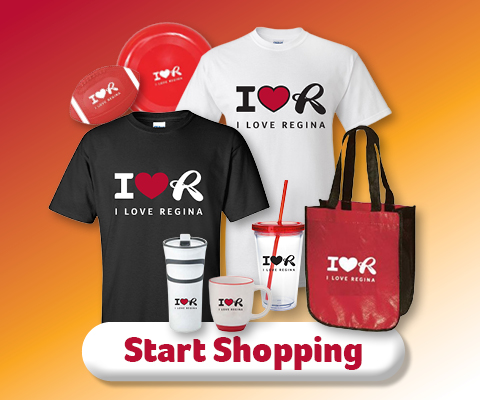The 2026-2027 budget passed on December 19, 2025. This budget focuses on continuity for the 60 services the City provides and minimal adjustments to ensure fiscally responsible leadership
The approved mill rate increase for 2026 is 10.9% per cent. The combined increases to the mill rate, utility rate and library levy will add up to $38.70 per month for the average Regina household.
The 2026 Budget focuses on core community priorities such as safety, infrastructure and comprehensive civic services. Key investments include $131 million for the Regina Police Services, $55 million for Regina Fire and Protective Services, $223 million to go towards capital projects such the renewal and maintenance of our roadways and $119 million for water utility capital projects.
You can find the agenda packet for the 2026-2027 Budget Deliberations at the link below:
In September 2025, the City will begin presenting 2026 Budget Proposal Reports to City Council. City Council approves a final rate increase as part of their Budget deliberations.
Once a budget is approved, it will allocate general operating funds, which support the more than 60 services that the City provides to residents, as well as resources for capital investments and projects across the City. It may include changes to the cost of utilities or the mill rate.
The City’s 2025 proposed budget was approved with the following reductions:
- General Carbon Tax Savings for Utilities - $600,000
- Utility Cost Savings for Natural Gas - $100,000
- Reduce General Revenue Transfer to Transit Fleet Reserve - $500,000
- Defer Workplace Improvements - $100,000
- Defer City Facility Upgrades and Retrofits - $100,000
- Reduce Frequency of Custodial Services - $80,000
- Defer SCADA Cyber Security Audit (Phase 2) - $26,000
- Reduce Mosquito Control Service - $44,000
Building the Budget
The following video provides an overview of how City Administration and Council build the annual budget.
Video Transcript
|
Audio |
Visual |
|
Narrator: Did you know the City of Regina is responsible for providing many of the services we use every day? |
City scene. Vehicles, pedestrians, and bikes animate across the scene. |
|
More than 60, in fact, |
City scene fades to background. Text reading “60+ Services” appears. |
|
Including water in our taps, the roads we drive on, snow removal, garbage and recycling collection, and police and fire services that help keep our community safe. |
Icons representing water, roads, snow removal, garbage, recycling, police services and fire services appear. |
|
So when it comes to making budget decisions, how the City invests your tax dollars is important for everyone. |
Previous icons merge together and transform into a coin. |
|
Your property taxes make up about half of every dollar the City spends. |
The first portion of a pie chart animates in, rotating in from the top. |
|
Other revenue comes from government grants, program fees and charges, and reserve funds. |
The remaining sections of a pie chart rotate in. |
|
So how does the City make sure that your money is being put to good use? |
An animated hand drops a coin into another animated hand. |
|
We start with identifying costs to operate services for the coming year and deciding where to make investments in the community. |
Animated coins begin to pile up. Text reading “Average Budget: $500 Million” appears. |
|
Day-to-day services like park maintenance, street cleaning, and recreation programs make up the operating budget. |
Icons for park maintenance, street cleaning and recreation programs animate in. |
|
While the capital budget consists of road repairs, facility upgrades and renovations, and other major projects. |
Icons for road repairs, facility renovations and major construction projects animate in. |
|
Services like police and fire protection, facilities and recreation, roads, garbage and recycling collection account for a large portion of the overall operating and capital budget each year. |
Icons and percentages for police services (25%), recreation facilities (22%), roads (15%) and garbage collection (6%) animate in, as well as text indicating ‘Other Services’ (32%). |
|
Budget planning also includes considering things like cost of living, growth, the increasing cost of providing services, and the condition of our infrastructure. |
A bar graph animates in. There is a dollar sign featured prominently over the graph. Two people appear around the graph. |
|
With population growth comes increased cost to deliver services and the need to invest in new and existing infrastructure to meet demand. |
People around the graph begin to multiply, and the graph continues to trend upwards. |
|
With all this in mind, the City focuses on several priorities when proposing its budget to City Council. |
Icons for water, roads, snow removal, garbage, recycling, police services and fire services animate in. |
|
We look for ways to keep services affordable and to reduce overall costs. |
A pile of coins animate in. The pile grows smaller until only a few coins remain. |
|
This is achieved through innovation – finding new and more efficient ways of providing services. |
Five lightbulbs drop into frame. There are gears within each lightbulb, which begin to turn. The lightbulbs flash as the gears stop turning. |
|
We plan ahead for future repairs and expenses, and allocate portions of today’s property tax dollars to help fund the cost of rebuilding infrastructure in the future. |
A stick figure drops on top of the centre lightbulb, holding a telescope. We zoom in as the figure uses the telescope to look ahead. The figure puts away the telescope and pulls out a chart, where it marks something down using a pencil. |
|
We consult citizens to make sure your priorities are being met. |
People animate into frame. Speech bubbles animate in around them. Arrows come out of the speech bubbles, flowing to the right. |
|
Your feedback and involvement helps tell us what is needed now and what is most important to you for the future. |
Animate in a group of stick figures putting together a large puzzle. A crane hook is dropping the last piece into place. |
|
The best communities are built by working together. |
City scene fades back in. People, cars and bikes animate across. |




